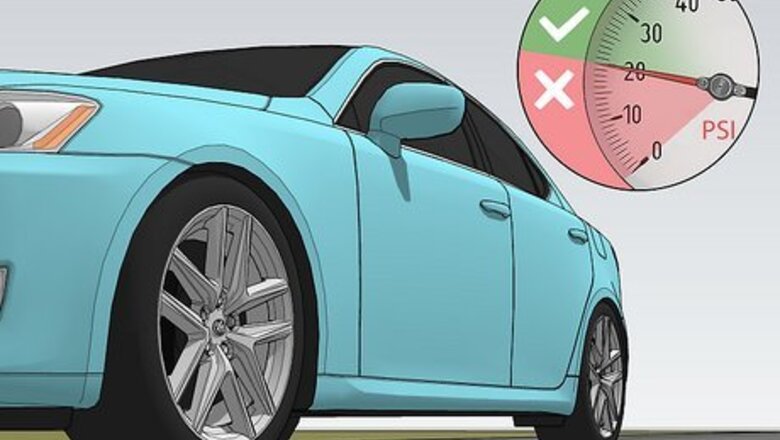
views
- Avoid driving if your tire pressure is 20 PSI (140 kPa), or if one of your tires is visibility lower than the others or soft to the touch.
- Drive no more than 50 miles (80 km) and stick to dry, paved roads. Stay under the speed limit, and go no faster than 50 mph (80 kph) on highways.
- Visit a gas station to inflate your tires with an air pump, or buy a portable tire inflator for emergencies. Have a mechanic repair or replace damaged tires ASAP.
Can you drive with low tire pressure?
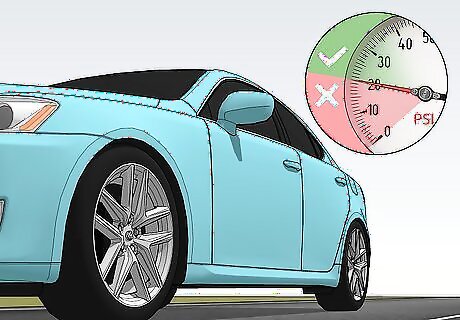
Avoid driving if your tire pressure is 20 PSI (140 kPa) or lower. At such low tire pressures, your vehicle will be difficult to control and the low tire can easily get damaged. Use a tire gauge to check the tire pressure immediately after your tire warning light comes on. This occurs when the pressure in one of your tires drops 25% below the recommended amount. The recommended tire pressure for your car is printed on a sticker inside the driver’s door frame. You can also find it in the vehicle’s manual. For most tires, the recommended pressure is 32-40 PSI (220-245 kPa). So for example, if the recommended tire pressure for your car is 36 PSI (250 kPa), the tire warning light will turn on if the pressure falls below 27 PSI (186 kPa).
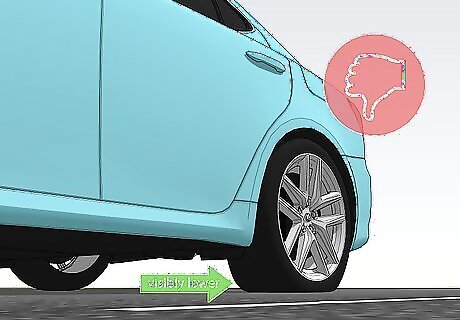
Don’t drive if one of your tires is visibly lower than the others. Inspect your tires to confirm that they are all the same height. Then press on each tire’s sides with your fingers to make sure they all feel equally firm. If they’re all equally firm, your tires have enough pressure to support your car, temporarily. Don’t drive if one of your tires is softer to the touch than the others. A soft tire is more likely to burst, get punctured, or skid when you apply the brakes. The “side” of a tire is the rubber part surrounding the rim, not the treaded part that touches the road.
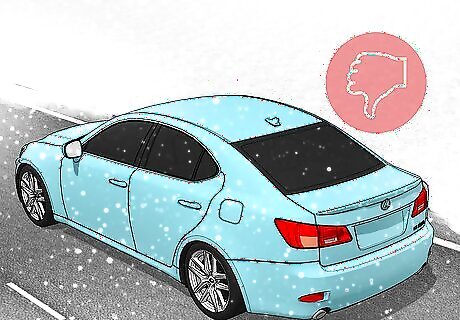
Steer clear of rain, snow, or icy roads. Low tires have poorer traction than properly-inflated ones. This can be extremely dangerous on wet, slippery roads where the traction is already severely reduced. You may have difficulty steering your vehicle, increasing the chances of an accident. If you have to drive in these conditions due to an emergency, limit your driving to 10 miles (16 km) or less, and your speed to 20 mph (32 kph) or lower. Keep your headlights and wipers on at all times.
Driving Safely with Low Tire Pressure
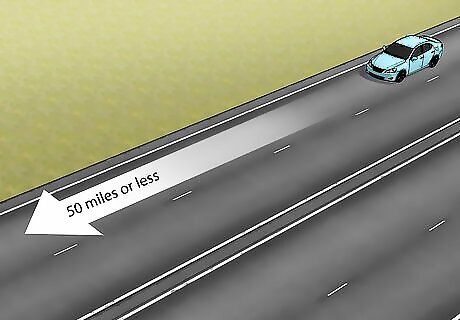
Drive no more than 50 miles (80km) and stay on dry, paved roads. Stick to well-maintained streets and highways with few or no potholes. Make sure road conditions are good, with plenty of visibility. Choose roads with light or moderate traffic when possible. Avoid driving in fog, poor weather, or heavy traffic since your vehicle will be harder to control with a low tire.
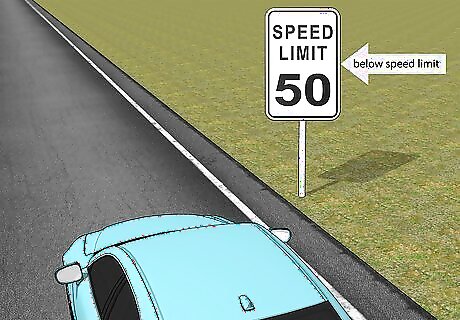
Drive below the speed limit and avoid going over 50 mph (80 kph). Your car will be easier to control at low speeds, and the low tire is less likely to burst from excess friction. Slow down and pull over right away if you hear a rumbling noise or feel unusual vibrations in the steering wheel. This could indicate that your tire has gone flat. Pull over if your car becomes hard to steer, or if it starts to fishtail or repeatedly veer to one side of the road. Contact roadside assistance or have your car towed to a mechanic.
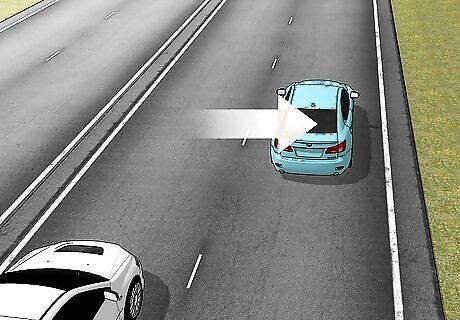
Stay in the right lane or pull over to let vehicles pass you. Keep an eye out for drivers coming up behind you, especially on narrow roads. Slowly pull over and gently bring your car to a stop to prevent skidding. Avoid the left and center lanes when driving on highways, unless you are making a left turn or taking a left exit. Avoid pulling over onto grass or patches of dirt, if possible. The low tire could cause your car to skid or lose control on these surfaces. Turn on your hazard lights as you pull over to encourage drivers to pass you. Note that in some states, it’s illegal to use your hazard lights while your car is moving.
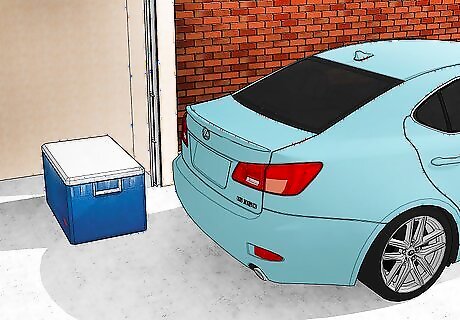
Remove any heavy items stored in your vehicle. This lightens the load on your tires, making it less likely that the low tire will burst. Take out objects like luggage, tools, sports gear, construction equipment, landscaping equipment, coolers, and any other non-essential items that are particularly heavy. Store them in your home, or in another vehicle, until the low tire is fixed. Don’t remove car seats or emergency equipment like spare tires, jumper cables, flares, and medical kits.
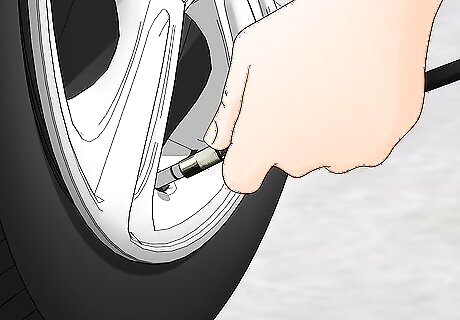
Get your low tire reinflated, repaired, or replaced ASAP. Use an air pump at a gas station to add air to your low tire, or ask a mechanic to add air for you. Have the mechanic inspect your tires for wear and damage. Ask them to plug or repair any punctures, if possible. Replace old and damaged tires that cannot be repaired. Waiting too long to fix a tire increases the likelihood of a blowout or serious accident.
Risks and Drawbacks of Driving with Low Tire Pressure
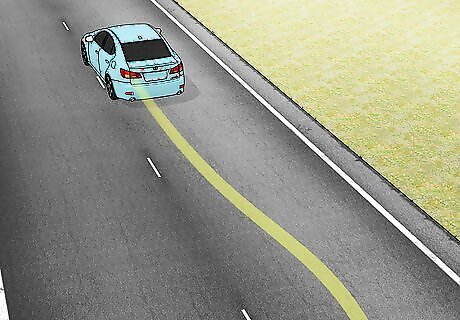
Your car may be harder to control. A low tire has poor traction, meaning that it doesn’t grip the road very well. This can cause your car to skid when making turns. You could even lose control at higher speeds, causing you to crash. You may not notice the poor traction right away. However, the problem may get worse as your tire loses pressure, increasing the risk of an accident.
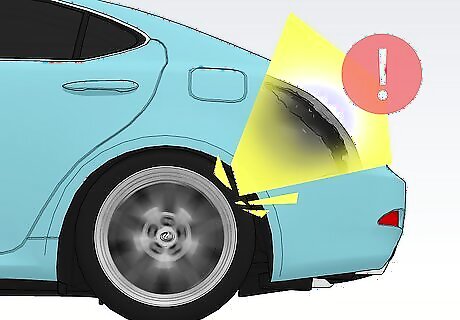
Your tire could burst while you’re driving. This is called a “blowout,” and it’s incredibly dangerous. Your car could suddenly swerve unexpectedly. Your steering might not work correctly, making your car impossible to control. You might even have difficulty slowing down due to the loss of friction from the missing tire. Low tire pressure creates excess heat and friction against the tire’s sidewall, rapidly damaging your tire and increasing the chances of a blowout.
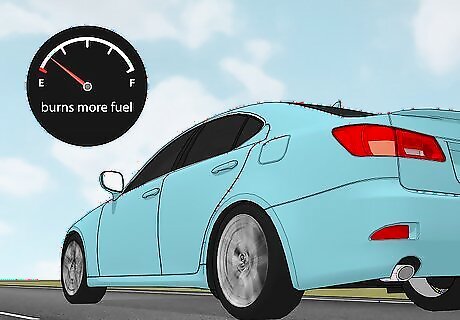
Your car will consume much more fuel than usual. Low tires have very high rolling friction—that is, their slightly-flattened shape makes them “resist” rolling. To compensate, your car’s engine will work harder and burn more fuel in the process. This lowers your MPG (L/km) and makes your car less efficient. If you’ve ever ridden a bike with low tires, you’ve experienced this effect before. You have to pedal much harder to get the bike moving, just as your car has to work harder to get itself moving on low tires.
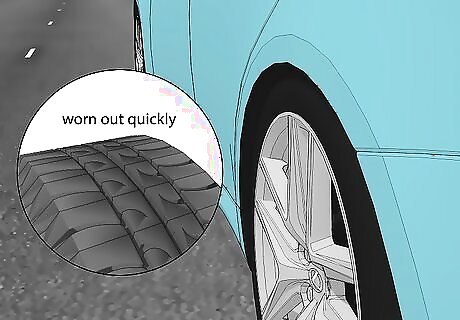
The low tire won’t last as long. All tires wear down eventually, but a low tire wears down even faster due to the increased friction. Over many months and thousands of miles of driving, the low tire will become much more worn than the others, requiring it to be replaced sooner. Unevenly worn tires can also make your car harder to control in an emergency, such as when slamming the brakes, since one side of the car may skid more than the other.
Fixes for Low Tire Pressure
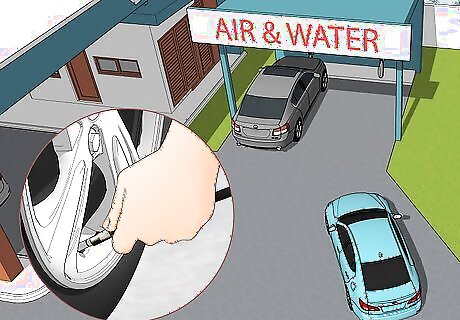
Inflate your tire at a gas station using an air hose. Many gas stations have coin-operated air pumps with hoses for filling tires. Add coins to the machine, remove unscrew the cap covering the valve on the low tire, and press the hose’s nozzle against the valve to form a seal. Fill the tire until it reaches the correct pressure. The recommended tire pressure for your car is usually printed inside the driver’s door frame, and in your car’s manual. Note that the front tires may have a different recommended pressure than the rear tires. Some air pumps have a display indicating the pressure inside your tire. In some cases, you can input the desired pressure using buttons on the air pump, and the pump will automatically stop when your tire reaches that pressure. Use a tire gauge to measure the pressure inside your tires if the air pump does not display the pressure. Avoid overfilling your tires.
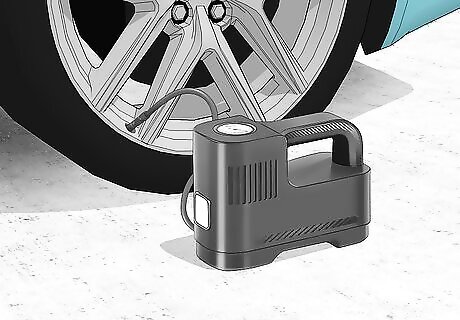
Use a portable tire inflator to fill your tire in an emergency. A portable tire inflator consists of a hose connected to a small air compressor. Connect the hose’s nozzle to the valve on the low tire, then run the pump until the tire reaches the correct pressure. Use a tire pressure gauge to check the pressure, unless the pump indicates the pressure on a display. Many portable tire inflators connect to your car’s round 12-volt socket, though some are powered by rechargeable batteries. You can purchase a portable tire inflator online or from a local auto supply store. Keep the inflator in your trunk for emergencies. If it’s battery-powered, recharge the battery periodically to ensure it always has enough power to operate.
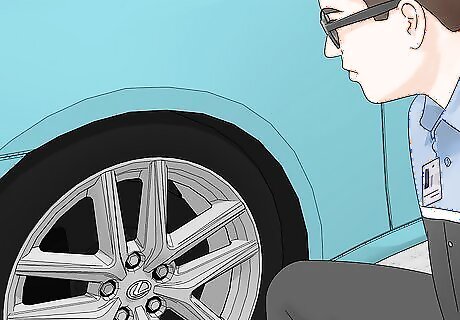
Have a mechanic fix or replace your leaky tire. Ask a mechanic to assess the damage on your tire. If the leak is small, they may be able to patch or plug it using special tools. If the damage is too severe, purchase a new tire from them and have them install it. Have your tire fixed or replaced as soon as possible. Waiting days or weeks increases the likelihood of tire damage and accidents. If your damaged tire is covered by a warranty, you may be able to get it replaced for free. Contact the mechanic or dealership where the tire was installed to ask if this is an option.
Causes of Low Tire Pressure
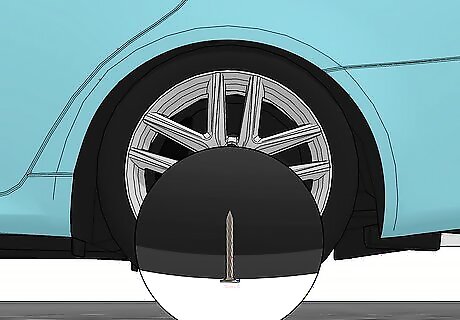
Punctures from nails, glass, or other debris. Even the toughest are vulnerable to sharp objects on the road. If a nail or similar object is stuck in your tire, the air may slowly leak out until your car’s tire warning light turns on. A mechanic may be able to plug minor holes in your tire. However, you may need to replace your tire if it has a large hole, rip, bubble, or other major damage.
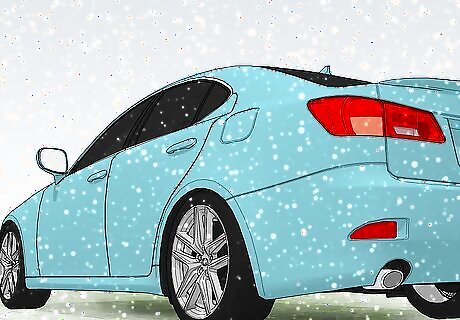
Temperature changes, especially during the winter. Air naturally contracts in colder temperatures. This is why balloons shrink when placed in the freezer—and why tires lose their pressure in freezing weather. Your tire pressure will drop 1 PSI (7 kPa) for every 10°F (5.6°C) drop in temperature. This is normal and is not caused by a leak. So for instance, if your tire pressure was 32 PSI (220 kPA) in the summer, it could fall to as low as 20 PSI (140 kPA) in the winter if you don’t add air periodically.
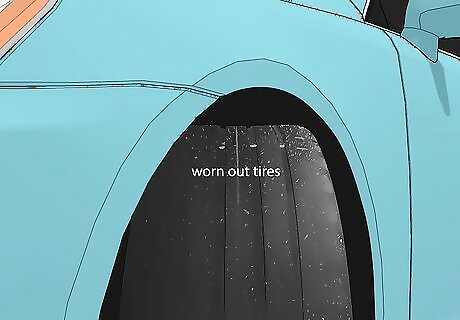
Old tires that are very worn down. Heavily-used tires slowly lose their ability to hold pressure. If your tires are bald, visibly worn, and haven’t been replaced in years, they may start leaking air despite not being punctured. They’ll eventually go flat if you don’t refill or replace them. Old tires have poor traction and can be dangerous to drive on, even if they don’t leak.
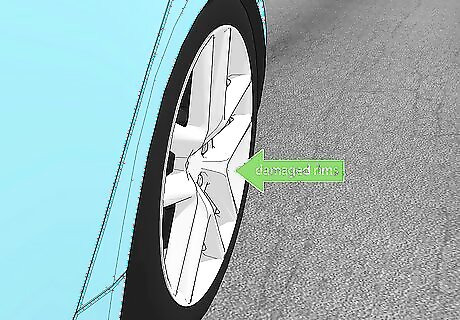
Damaged rims or wheel hubs. The edges of your tires form a seal against the rim and wheel hub, preventing air from leaking. If one of your car’s rims or wheel hubs is bent, cracked, or warped, the tire attached to it may fail to form a seal. Air may slowly escape even if the tire is brand new and undamaged. Rims and wheel hubs can get damaged by potholes, speed bumps (if taken too fast), and accidents.










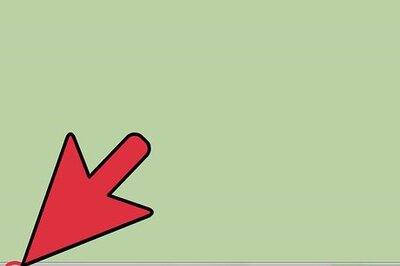
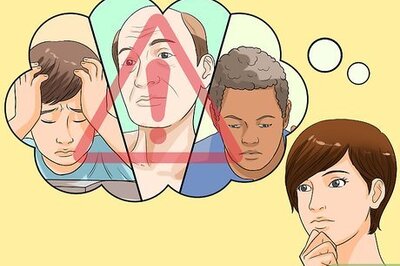


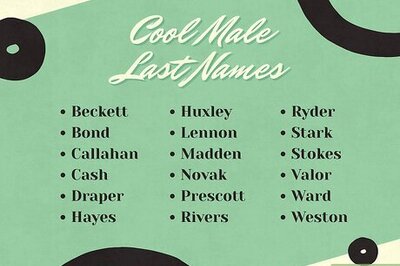



Comments
0 comment